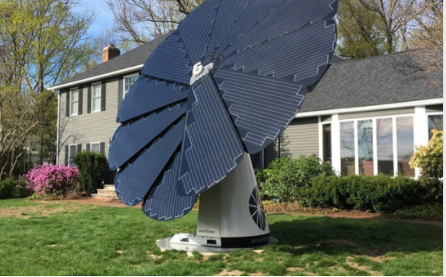How Smart Is the Smart Flower?

How do I know it’s photshopped? Let’s do the math associated with its costs, and the answer will become obvious.
The manufacturer says that an average installation is $27K, but there is a 30% investment tax credit (ITC), so that means it’s really $18.9K. The warranty of the system is two years, but let’s assume that, by some miracle, the system is still operational when the warranty of the PV itself runs out in 25 years.
You plunk down your $18.9, and eat the opportunity cost of that money, say 5% per year, for 25 years.
So your costs over 25 years are $18.9K * (1.05)25, or $64K. You’ll save (depending on where you are on the Earth’s surface) an average of 5000 KWhrs/year * 25 years = 125 KWhrs. The time value of money works against you here too, since your savings are realized over a 25-year period (as presented in this spreadsheet); the value of your savings, again using 5%, is actually only the equivalent of 72.2 KWhrs. All things included, you’re paying $0.89 per KWhr, about eight times the national average.
In reality, of course, the situation is far worse, because:
a) If you have an average-size house, you’re over-producing electricity in the middle of a sunny day, so you either need to store it in a battery system (add $6000, $4200 after ITC), or sell it (for peanuts) back to the grid, and
b) There is no way in the world that this device is going to out last its warranty by 1150% (23 years).
I conclude that the image is photoshopped because no homeowner on Earth would make a decision to install one.
And that’s on the basis of costs alone; aesthetics are subjective, but I can’t imagine anyone who would rather have this thing on his front yard than PV on his roof. A little touch football? Sorry, we have this thing in the yard.
